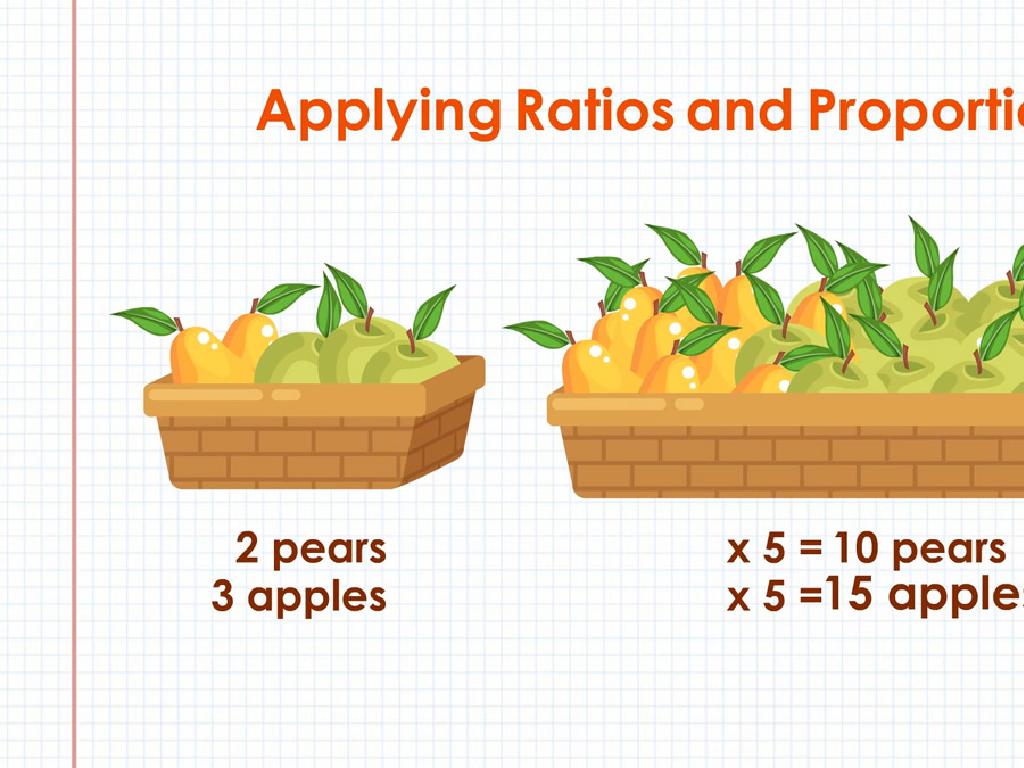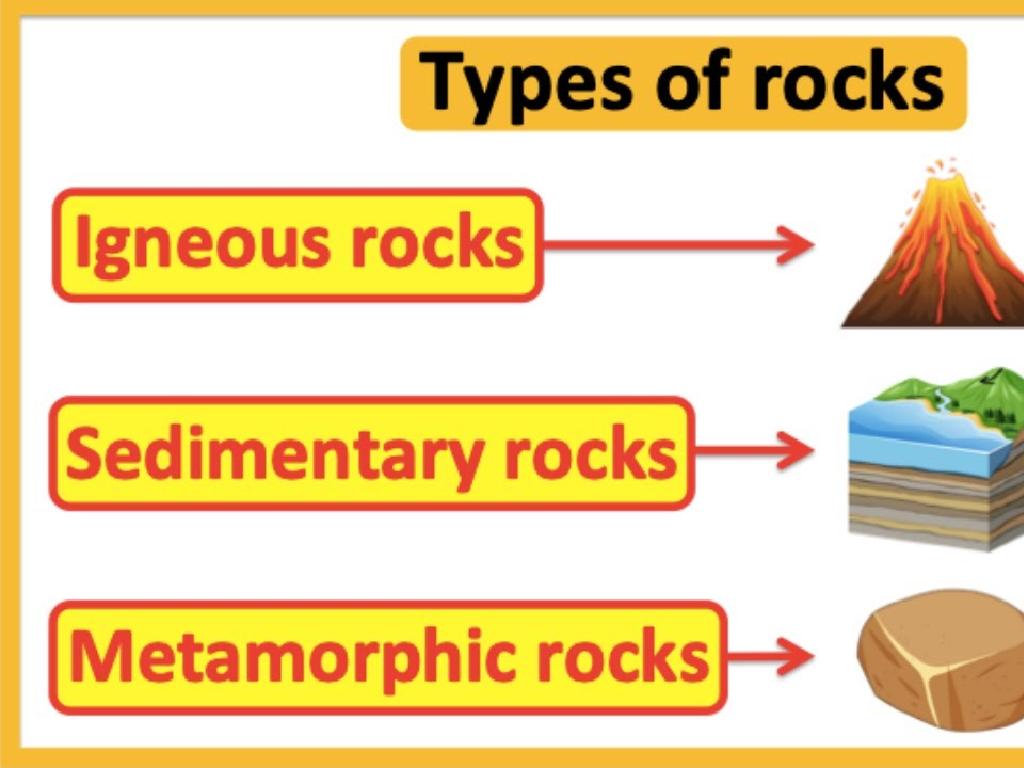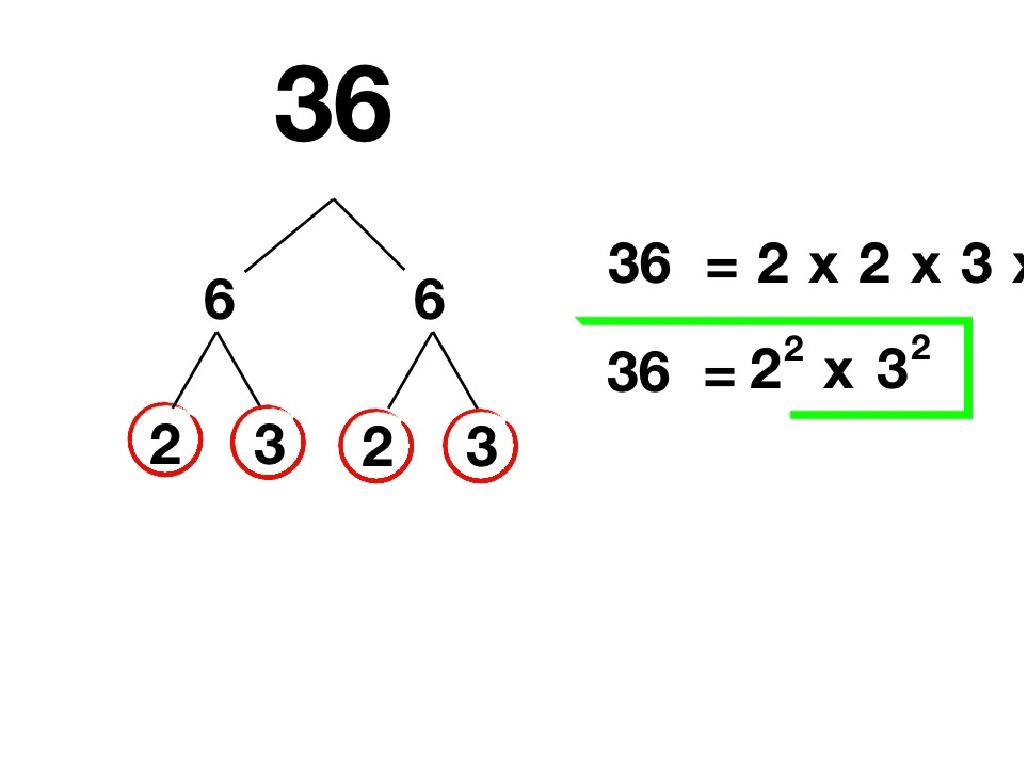Add And Subtract Mixed Numbers
Subject: Math
Grade: Seventh grade
Topic: Operations With Fractions
Please LOG IN to download the presentation. Access is available to registered users only.
View More Content
Introduction to Mixed Numbers
– Understanding fractions & whole numbers
– Fractions represent parts of a whole, while whole numbers are complete units.
– Defining mixed numbers
– Mixed numbers combine whole numbers with fractions, like 2 1/2.
– Mixed numbers in daily life
– Common in cooking, e.g., 1 3/4 cups of flour, or time, e.g., 2 1/2 hours.
– Practice with real examples
– Use examples like recipes or measuring length to practice adding and subtracting mixed numbers.
|
This slide introduces the concept of mixed numbers, which is a foundational element in understanding operations with fractions. Begin by clarifying the difference between whole numbers and fractions, ensuring students are comfortable with each concept separately. Then, define mixed numbers as the sum of a whole number and a fraction, which they likely encounter in everyday scenarios such as cooking or telling time. Provide relatable examples to illustrate the use of mixed numbers in daily life. Encourage students to think of their own examples and use them to practice adding and subtracting mixed numbers, reinforcing their understanding of the concept.
Visualizing Mixed Numbers with Pie Charts
– Pie charts show mixed numbers
– Each pie chart slice represents a fraction of a whole
– Convert improper fractions
– Change fractions greater than a whole into mixed numbers
– Mixed numbers from visuals
– Look at pie charts and write the mixed number
– Practice with real examples
– Use pie charts to add and subtract mixed numbers
|
This slide introduces students to the concept of visualizing mixed numbers using pie charts, which can make understanding these numbers more intuitive. Start by explaining that each slice of the pie chart can represent a fraction and a whole pie is the number ‘1’. Show how to convert improper fractions (fractions where the numerator is larger than the denominator) into mixed numbers. Provide visuals of pie charts and ask students to identify the mixed numbers they represent. Finally, give students practice problems where they use pie charts to add and subtract mixed numbers, reinforcing their understanding of the concept. Encourage students to draw their own pie charts as part of solving these problems.
Adding Mixed Numbers
– Step 1: Add whole numbers
– Combine the whole number parts: 2 + 3
– Step 2: Add fractions separately
– Add the fractional parts: 1/3 + 2/5
– Example: 2 1/3 + 3 2/5
– Convert to improper fractions, find common denominator, add, and simplify
|
When teaching students to add mixed numbers, start by separating the whole numbers from the fractions. Add the whole numbers together for the first step. For the second step, add the fractions by finding a common denominator and converting them into improper fractions if necessary. Use the example 2 1/3 + 3 2/5 to illustrate the process. Convert 1/3 and 2/5 to have a common denominator, add them, and simplify the result. If the sum of the fractions is an improper fraction, convert it back to a mixed number. This slide will help students understand the process of adding mixed numbers step by step.
Subtracting Mixed Numbers
– Step 1: Subtract whole numbers
– Subtract the whole number parts first
– Step 2: Subtract the fractions
– Then subtract the fractional parts
– Example: 5 3/4 – 2 2/3
– 5 – 2 = 3 and 3/4 – 2/3 = 5/12
|
When teaching students to subtract mixed numbers, start by separating the whole numbers from the fractions. Subtract the whole numbers. Next, ensure the fractions have a common denominator before subtracting them. Use the example 5 3/4 – 2 2/3 to illustrate the process. Convert 3/4 and 2/3 to have a common denominator (12), making them 9/12 and 8/12 respectively. After subtracting the whole numbers (5 – 2 = 3), subtract the fractions (9/12 – 8/12 = 1/12). Combine the results to get the final answer: 3 and 1/12. Encourage students to practice with different examples and provide guidance on finding common denominators.
Borrowing and Regrouping with Mixed Numbers
– Understanding when to borrow
– Borrow when the fractional part of the minuend is smaller than the subtrahend’s.
– Steps to regroup fractions
– Convert mixed numbers to improper fractions, then subtract and simplify.
– Practice subtraction: 6 1/2 – 4 3/4
– Let’s solve 6 1/2 – 4 3/4 together and find the difference.
|
This slide focuses on the concept of borrowing and regrouping when dealing with the subtraction of mixed numbers. Borrowing is necessary when the fractional part of the number you are subtracting from (minuend) has a smaller numerator than the fractional part of the number you are subtracting (subtrahend). Regrouping involves converting mixed numbers to improper fractions to make subtraction easier. The practice problem 6 1/2 – 4 3/4 is an excellent example to illustrate these concepts. Walk through the problem step by step with the class, ensuring to show how to borrow 1 from the whole number 6 and regroup it with the fractional part 1/2 to make the subtraction possible. After solving, encourage students to try similar problems for homework to reinforce the concept.
Simplifying Answers in Mixed Numbers
– Reduce fractions to simplest form
– Divide numerator by denominator to find the greatest common factor
– Convert improper fractions
– Change to a mixed number if the numerator is larger than the denominator
– Practice: Simplify 7/4 + 1 1/2
– Example: 7/4 becomes 1 3/4, and 1 1/2 remains the same. Now add: 1 3/4 + 1 1/2
|
This slide focuses on simplifying the answers after adding or subtracting mixed numbers. Students should learn to reduce fractions to their simplest form by finding the greatest common factor and dividing both the numerator and the denominator by it. They should also practice converting improper fractions, where the numerator is larger than the denominator, into mixed numbers. The practice example combines these skills by asking students to simplify the sum of an improper fraction and a mixed number. The teacher should guide the students through the steps of simplifying each term before adding them and then simplifying the final answer. Additional practice problems can be provided to reinforce these concepts.
Class Activity: Exploring Mixed Numbers
– Group activity: solve problems
– Share solutions with the class
– Discuss different solving methods
– Reflect on various approaches
|
This slide introduces a collaborative class activity focused on adding and subtracting mixed numbers. Divide the class into small groups and provide each with a set of mixed number problems to solve. Encourage students to work together and discuss their problem-solving strategies. After the activity, each group will share their solutions and the methods they used to arrive at them. Facilitate a class discussion to compare the different approaches taken by groups, highlighting the benefits of each method. This will help students understand that there can be multiple ways to solve a problem and that discussing different methods can provide deeper insights into the topic. Possible activities could include solving word problems, finding the sum or difference of mixed numbers in a recipe, or calculating the time spent on different activities throughout the day.
Homework and Recap: Mixed Numbers
– Assign mixed number practice problems
– Recap today’s key lesson points
– Review adding and subtracting mixed numbers, finding common denominators, and simplifying.
– Emphasize the value of practice
– Homework: Practice, practice, practice!
– Complete the assigned problems to reinforce today’s concepts.
|
As we conclude today’s lesson on adding and subtracting mixed numbers, assign a set of practice problems that cover a range of difficulties. Ensure students understand the importance of finding common denominators and simplifying their answers. Recap the main points of the lesson, emphasizing the steps to add and subtract mixed numbers. Remind students that mastering these skills takes practice. For homework, students should complete the problems and be prepared to discuss their solutions in the next class. Encourage them to try solving the problems in different ways to deepen their understanding.






